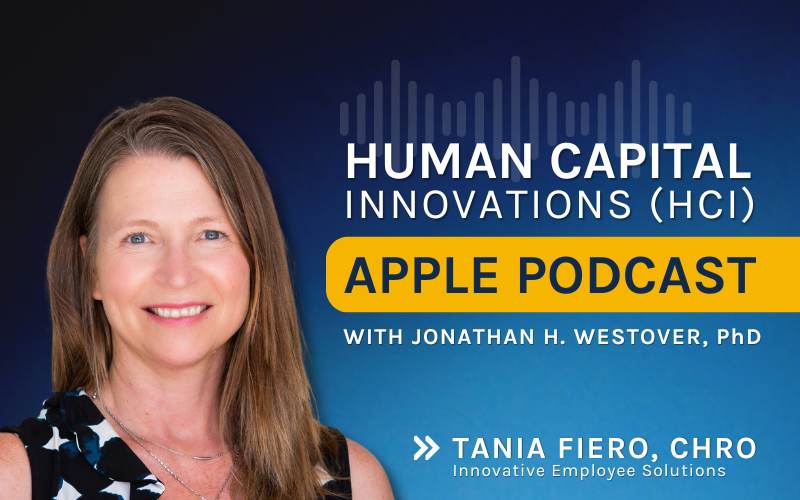By: Sean Ring, Business Development Manager
One of the most powerful and undeniable trends in the global economy is the perpetually transforming nature of the workforce. We have already experienced a vast shift over the past decade and experts in this field unanimously forecast the continued movement towards increased leverage of contingent labor.
Contingent labor is defined in a variety of ways; here is what Wikipedia has to say on the subject, “A contingent workforce is a provisional group of workers who work for an organization on a non-permanent basis, also known as freelancers, independent professionals, temporary contract workers, independent contractors (1099’s) or consultants (SOW – Statement of Work).
Contingent Workforce Management (CWM) is the strategic approach to managing an organization’s contingent workforce in a way that it reduces the company’s cost in the management of contingent employees and mitigates the company’s risk in employing them. From Ardent Partners to Deloitte to The Harvard Business review, the resounding narrative from experts brings awareness to the unprecedented growth of the contingent workforce, and that there are zero signs of this upward trend slowing anytime soon.
Take for example the study done by Oxford economics citing that 83% of executives state that they are increasing contingent workers within their firms, or that the Department of Labor reported the contingent workforce among the fastest growing segments of workers with a predicted increase of 23% over the decade from 2010-2020.
Generally speaking, the mainstream dialogue on this topic focuses on the “Gig Economy” such as ride sharing services like Uber and Lyft. These players have disrupted their respective industries and they are nowhere near done being disruptive, however the contingent workforce is much larger in scope than just the Uber’s of the world.
Those who are familiar with the contingent workforce are already aware that organizations worldwide, large and small, and in almost every single industry are bearing the fruits of contingent labor in order to compete in the ever volatile global marketplace.
Business leaders have realized that a rigid workforce structure (100% Full-Time Employee’s for example) creates exposure to the shifts in global demand and leaves them susceptible to market shocks that can snap a firm into pieces. A truly competitive firm in 2017 and beyond is able to scale staffing up or down as needed and can therefore be more agile and have the ability to withstand shocks and quickly pivot when necessary.
This shift to contingent labor is not one sided however, as there is significant evidence of a push from those performing work as well. Increasingly, talented workers are no longer enamored with the stability of a 9 to 5 permanent, full-time relationship with an employer. Independent professionals from a wide range of backgrounds and skill-sets are contributing to this shift out of the desire to have more autonomy.
Independent workers report increased work/life balance and more control over the trajectory of their careers, allowing them the opportunity to work for whomever they would like, for as long as they would like, and only on projects that actually excite them. Can you blame them? Imagine having the discretion to work when you want, for who you want, and only on projects that you truly enjoy… for most of us who still reside in a full-time, permanent job, an arrangement like that sounds amazing!
Whether it rings true in your firm or not, an interesting point of view by Michael Schrage states that savvy business leaders seem increasingly focused on productively cultivating the core 20% to 25% of workers who reliably generate 70% to 80% of enterprise value. Under this premise they are then looking to optimize all sources of contingent labor as they’re rethinking their economic relationships with the rest.
Once we become aware and can accept the fact that this structural shift is happening, we must then begin to consider the business implications and evaluate the ways in which we engage contingent workers. The fact of the matter is that these are not your grandmother’s temps. These are typically highly skilled workers who have many choices for whom they will choose to perform work and as this trend continues it will be imperative for firms to strategize on how they will become the “client of choice” for contingent workers much as they have spent a significant amount of time, energy, and resources vying to become “the employer of choice” in their respective industries through a variety of employer branding initiatives.
In order to properly engage contingent workers, your company must first consider how the following areas will be addressed.
Compliance
The very first aspect to consider in your evaluation should be compliance. There are various legal battles underway for the Uber’s of the world which truly underline the necessity for all of us as a society to completely re-evaluate how we define an Employee. Until the parameters of these antiquated definitions are brought up to speed in the world in which we currently exist, it will be imperative that business leaders understand how to operate compliantly within the existing construct in order to reap the benefits of a flexible workforce, while protecting their firms from the inherent risks that are associated when engaging contingent workers.
Take for example, the fact that FedEx settled a lawsuit in June of 2015 in which they were found culpable for incorrectly classifying 2,300 drivers in the state of CA as Independent contractors, ultimately costing the global logistics firm $228 million in fines and back taxes to the IRS as well as benefits such as paid holidays, medical, dental, and vision that were not paid to those drivers. Let’s be honest, how many firms can take a hit of that magnitude without being completely devastated? The FedEx case is just one of many, so please take heed of the risk exposure when your firm is engaging 1099 independent contractors because the ease of doing so today will not be worth the backlash tomorrow.
One step you can take to mitigate your company’s risk would be to outsource the evaluation and administration of the Independent Contractors your firm uses to a partner that specializes in Contingent Workforce Management services. These firms mitigate the risk for their clients by evaluating the worker status of all Independent Contractors and, in many cases, taking the liability of any future misclassification penalties. Innovative Employee Solutions is one of such companies that can help mitigate risks in these areas, keeping your firm at arm’s length by managing all Independent contractors as the Agent of Record, as well as payrolled W-2 contractors as the Employer of Record.
Technology
The second item on your list when evaluating your firm’s approach to contingent workforce management should be technology. Consider the approach that the big 4 accounting firm, PricewaterhouseCoopers (PWC) has taken in creating their own, proprietary marketplace for the engagement of Independent workers dubbed Talent Exchange. Independent workers complete a profile and are then given a platform to engage with managers who are seeking project based talent across all business units. This allows the workers to have unprecedented access to hiring managers so they may build relationships and have increased visibility into the organization.
For PWC, they now have a vetted pool of talent whose work has been reviewed and rated internally, and can increase the likelihood of creating a value-added match between contingent workers and specific projects that need to be completed.
If your company does not have the internal resources to build a system from the ground up then look no further than companies like UpWork and WorkMarket who are “Freelance Management Systems” (FMS) that can act as end-to-end solutions to find, engage, pay, and report on your contingent workforce.
Lastly, the traditional staffing model looks likely to be disrupted by online staffing companies such as Workforce Connexion who is set to launch in the summer of 2016. Workforce Connexion will offer a subscription-based online staffing model for companies who wish to directly source the talent they need from an online pool of pre-vetted talent, thus eliminating the high costs that are typically associated with placement fees paid to traditional search firms. Complex algorithms that match hard and soft skills, structured and unstructured data are among the technology features that look to propel workforce technology solutions like Workforce Connexion into the mainstream workforce ecosystem in the not too distant future.
Employee Engagement
The third and final area to consider for those looking to create, evaluate, or overhaul their contingent workforce management program, would be to ensure that all of your efforts align with your firm’s internal branding programs for permanent employees. A positive engagement for a contingent worker can drive a candidate directly into your permanent, full-time recruitment funnel
For ages, temps and contingent workers have been consistently treated as if they are a second class of worker. In many cases, contingent workers are performing tasks alongside permanent employees, and the performance of both workers has a direct impact In order to maximize the value that is delivered to the end client, it is imperative to understand the importance of creating alignment with permanent and contingent workers. Here are some steps that you can take in order to create an engaging, positive environment for your contingent staff:
- Include contingent workers in any structured after work or off-site social events
- Recognize contingent workers birthday’s just as you would any internal, full-time employees
- Offer comprehensive medical insurance benefits (applicable to W-2 payrollees only)
- Design a performance management system where you are requesting feedback and seeking to understand the professional goals of your contingent staff members (this can be especially effective to understand someone’s desire to perform work for you in the future)
- Recognize outstanding performance by contingent staff
The key here once again is alignment and consistency with how you engage your internal, permanent employees. You don’t want to go above and beyond anything you are doing for full time, permanent staff but rather seek to duplicate or mirror those same actions. Do everything that you can to ensure that you are nurturing and deepening the relationships that you have with contingent staff and you will have a leg up in the ever changing global marketplace.
As the Greek philosopher Heraclitus once noted, change is the only constant in life, and the workforce in which we spend the majority of our lives is no different. Is your organization prepared for the inevitable changes in the structure and engagement of the workforce? Ready or not, here it comes… May the contingent workforce be with you!






